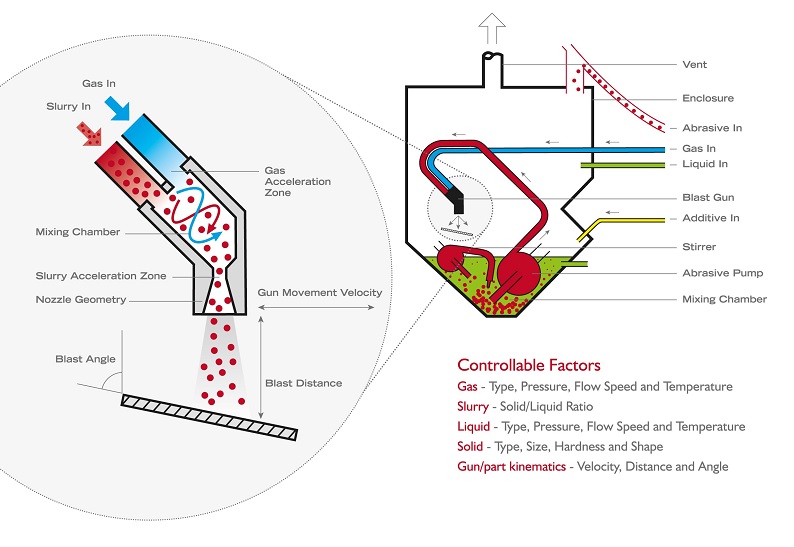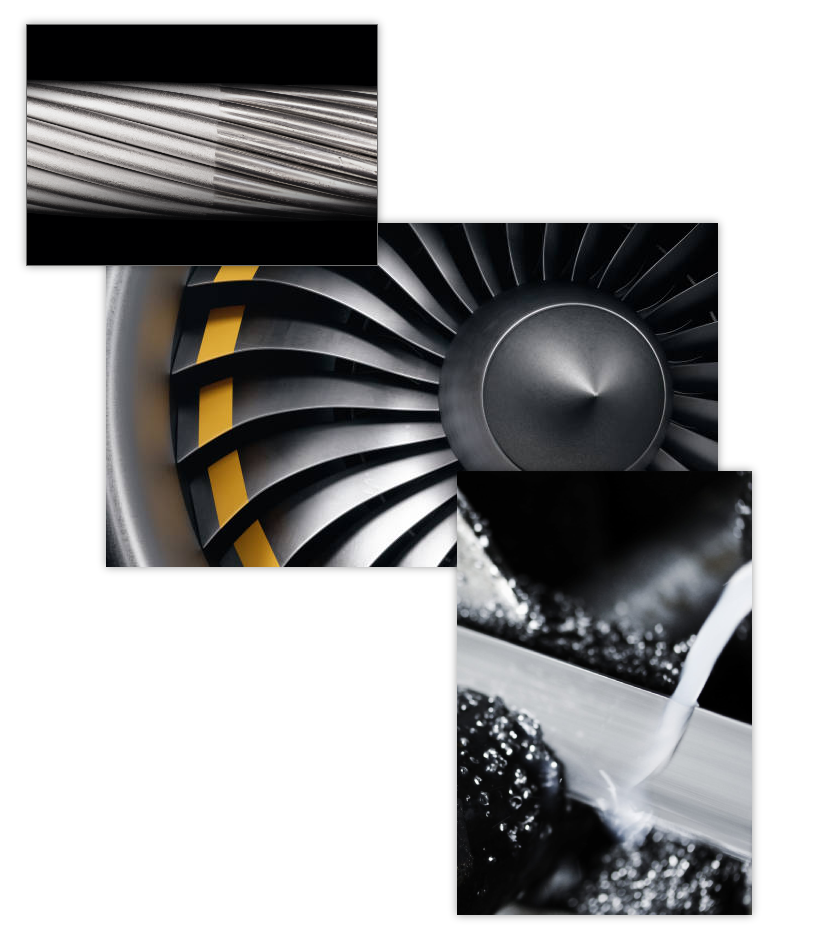Benefits of wet blasting
The wet blast process by Vapormatt is valued for the control and repeatability of processing it offers users.
Wet blasting is the use of an abrasive media and compressed air to achieve a desired finish on a chosen surface.

Unlike dry blasting, wet blasting (or Vapor blasting to give it its other name) uses a third element – liquid – to enhance the levels of surface finish that can be achieved. The benefit of including water is a much smoother and more consistent finish.
Wet blasting was developed by Norman Ashworth in the early fifties; the introduction of water was originally as a response to the banning of silica in sand blasting, although the benefits of wet blasting far outweighed that of its predecessor.
By lubricating the abrasive particles in a buffer of water, Norman found that there was more of an even flow across the surface when using wet blasting systems. This is advantageous as it cause less damage to the substrate and any abrasive action is consistent across the whole surface.
In understanding this, companies can have much greater control over their surface finishing and this is something that Vapormatt prides itself on when it comes to wet blast systems design. We are world leading when it comes to the level of control users can achieve with our wet blasting or vapor blasting machines.
A range of abrasive media’s can also be used in a Vapormatt wet blasting system and this is determined by the type of effect or finish that is required. Typically users will opt for a silicon glass bead for a “polished” finish or an aluminum oxide to achieve a “cutting” effect that leaves a matt finish. However, various “special” abrasive medias such as ceramic, plastics and stainless steel shot can also be used on particular applications.
Despite a wide range of applications, Vapormatt have chosen to build upon their technological advantage and opt to primarily serve those industries needing a very high quality of wet blasting that gives a very accurate surface finish. This allows us to work closely with high tech industries to constantly improve our processes.
Some of the various parameters that we look to control include:
When combined, these parameters make for one of the most controlled wet blasting processes available.
What is vapor blasting? – Vapor blasting is simply another name for wet blasting, so all of the technologies and applications associated with wet blasting apply to vapor blasting too.

Like dry blasting, vapor blasting uses abrasive media and compressed air to achieve a desired finish on a surface, removing coatings, contamination, corrosion and other residue, while increasing strength and durability. But unlike dry blasting, it uses a third element – water – to produce a much smoother and more consistent finish.
Today, it provides the perfect finish on everything from medical implants and bandsaw blades, to the composites used in Formula 1 cars and nuclear decontamination. But it isn’t a newcomer to the industrial world. The process was invented by Vapormatt’s founder, Norman Ashworth, in the 1950s as a response to the banning of silica in sand blasting, and a growing demand for more accurate, more controlled surface finishes.
Using water to lubricate the abrasive particles, Norman created a more even flow across the target surface. The even flow causes less damage to the substrate, with consistent abrasive action across the whole surface.
A full list of the Vapormatt wet blasting applications and wet blasting machines can be found on the website. Alternatively, speak to our Business Development Engineers for more information.
The wet blast process by Vapormatt is valued for the control and repeatability of processing it offers users.
With our core focus on process control, our wet blasting machines lead the way when it comes to repeatable and reliable processing.
We continue to add to our list of patents enabling customers to stay ahead of their competitors with market leading wet blasting technology.